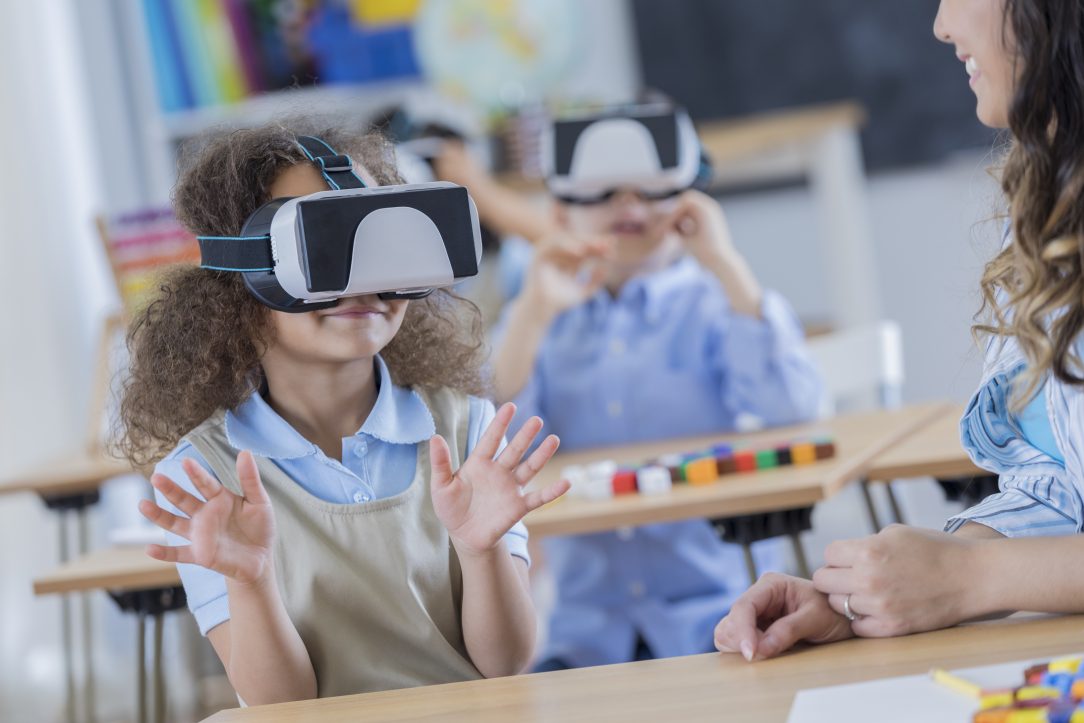New and advancing technologies are shaping almost every aspect of our lives. It is no surprise then that the typical classrooms are starting to shift to incorporate new educational opportunities. As access to technology increases, so does the technical literacy and savviness of our students. Teachers are now leveraging all kinds of technology to engage students and provide immersive learning experiences.
Creating personalised learning experiences
Introducing technology into the classroom isn’t about replacing teachers; it is about supporting the delivery of a lesson while also providing a personalised experience for the students. In the past, there has been a stronger push for the education system to shift standardised testing and start making allowances for each child’s unique learning style.
These new technologies introduce students to the concept of blended learning, where they become their own directors of when, where, and how fast they move through an activity. Additionally, many new technologies are built-in with the ability to analyse student behaviours and can adapt the lesson in real-time depending on the student’s strengths and weaknesses.
Let’s take a look at how these new forms of technology are being used today.
Augmented, virtual and mixed reality
These forms of transformative technologies are supporting the instructions given by teachers as well as creating immersive lessons to be fun and engaging for students of all levels.
These adapted lesson plans can include a way for students to experience:
- A virtual reality roller coaster during a physics lesson,
- Going on a virtual field trip to ancient Greece during a history class,
- Providing a way for students to deep-dive into molecular structures, or
- Compare the real size of dinosaurs to nearby trees or buildings in the schoolyard.
The lesson plan ideas are endless with the introduction of augmented, virtual and mixed reality technologies in the classroom. Start transforming your classroom today by using these three augmented reality apps.
Devices
We have already seen the huge impact one-to-one devices have made on the education industry. However, there is still a clear divide and disadvantage for students of lower socio-economic background whose parents cannot afford a device for each of their children. The effects of this were further seen during the remote-learning period at the start of this year due to COVID-19.
Students who leave school unfamiliar with technology or with the risks and responsibilities associated with it will lag behind their peers when it comes to further education, jobs and general life skills.
Artificial intelligence
Having access to virtual assistants in the classroom can assist students who may be struggling to comprehend tricky concepts. This allows teachers to spend their spare time on students who may have higher needs. The use of AI in the classroom can also create a personalised learning experience tailored to their strengths, weaknesses and needs.
Gamification
Children have always learned through play, with lessons revolving around hands-on experiences and creativity. The shift in our educational system has seen an increase in classrooms being more ‘sit still, listen and learn the facts.’ We are potentially reaching an enlightened age in education, whereby play is re-introduced to the classroom, and students are experiencing a more immersive and engaging learning experience.
3D Printing
3D printing has slowly been introduced into Australian classrooms for some time now and is being used to assist students coming to grips with complex concepts. Furthermore, students are now able to bring their designs to life or assist in providing visual representations of what they can interact with.
We are seeing an increase in 3D printing being used in subjects such as Chemistry where students can print molecules in 3D. History students are also able to print out models of historical artefacts.
Robots and Coding
Robots have made an incredible impact on today’s classrooms by assisting in the teaching of coding. Robots are not just reserved for older students; small and simple bots can help very young students to understand sequencing, estimation and problem-solving concepts.
It is often said that coding will be the next universal language as well as an essential skill for many new jobs. Using robots to teach this topic in a fun and engaging way will hopefully support students who wish to explore new and advancing industries when they finish school. Students get instant feedback since the robot either behaves according to their intentions or doesn’t, exposing a bug in the code that students must then fix themselves.
Drones
A key element of today’s education pedagogy is encouraging students to view information from a variety of perspectives. Drones can assist in doing that in a literal way, by leveraging their interest and love of technology to show them different ways of looking at the world or viewing a physical problem.
Drones can be used in several ways, such as:
- Using footage to stimulate writing exercises,
- Mapping the path of the drone to learn about distance and time,
- Flying a drone to help improve hand and eye coordination, and
- Encouraging physical activity and education by filming their movements and discussing them later.
Not sure where to start?
The potential for technology to influence the way we teach or engage students isn’t just limited to the ones mentioned. Rather, as new and emerging technologies change the way we work and live, they will inevitably find their way into classrooms, preparing today’s students for tomorrow’s challenges.
To help you start transforming your classroom to take advantage of these new opportunities:
- Microsoft has released a free challenge to students in year 7 to 12 to learn about AI, known as the AI for Good Challenge.
- SpheroEdu also has a new platform for teachers and students to start learning and testing their coding skills to move robots.
To learn about more opportunities to integrate technology into the classroom, or if you are wanting to upskill your teachers to effectively use these new tools in lesson plans, contact the friendly eStorm team at any time on 1300 378 676 or [email protected].


